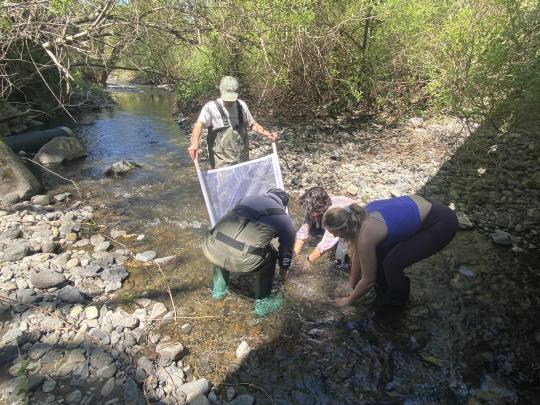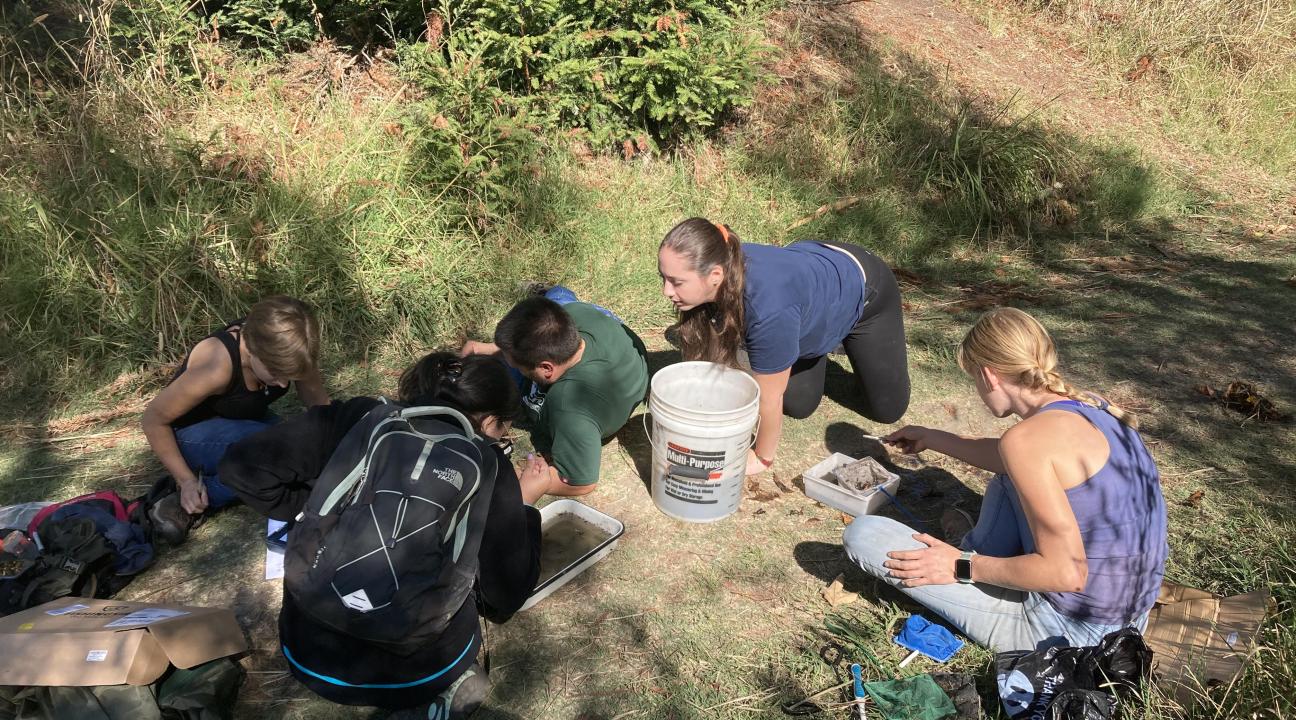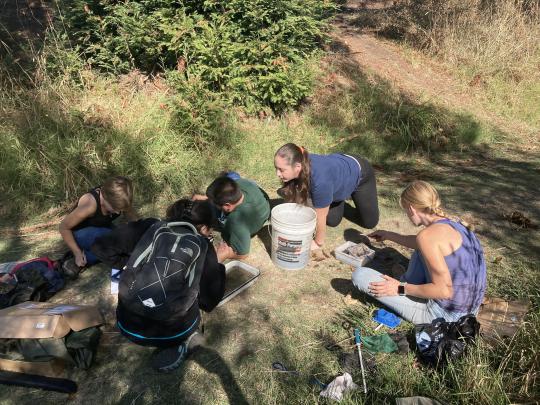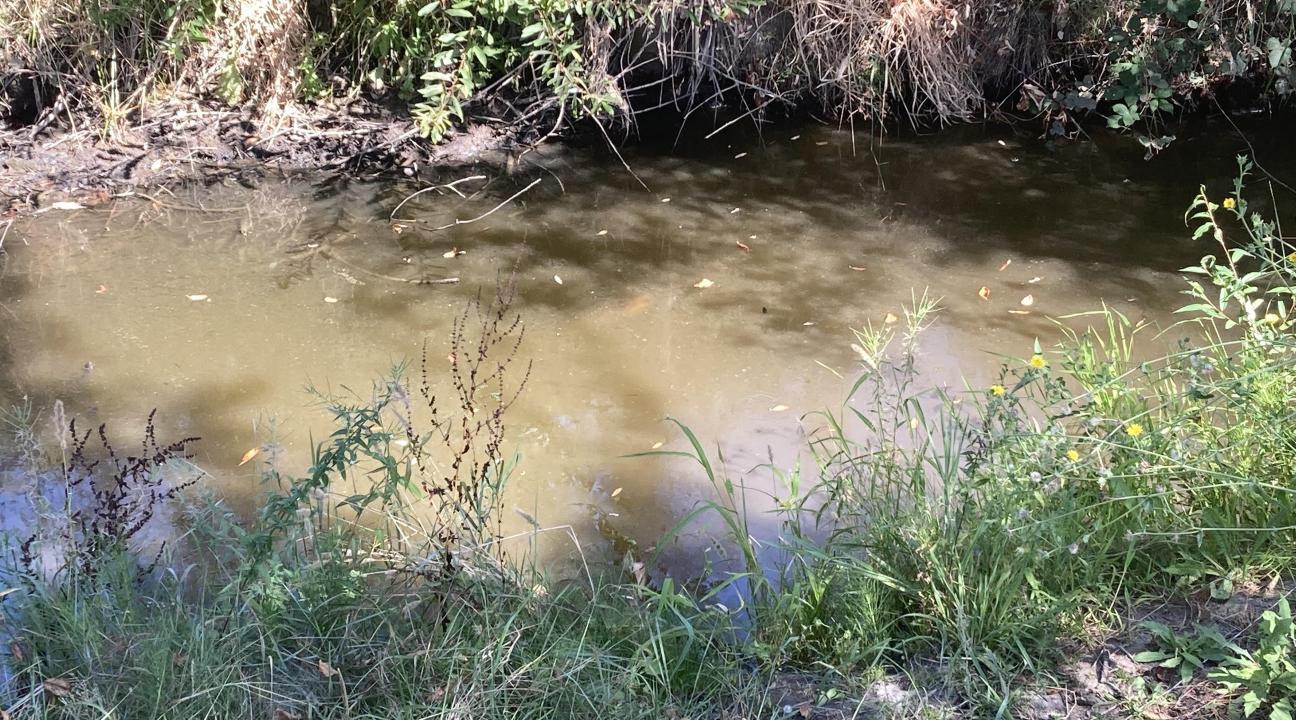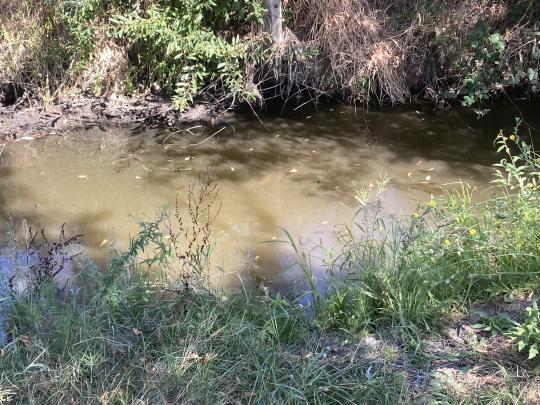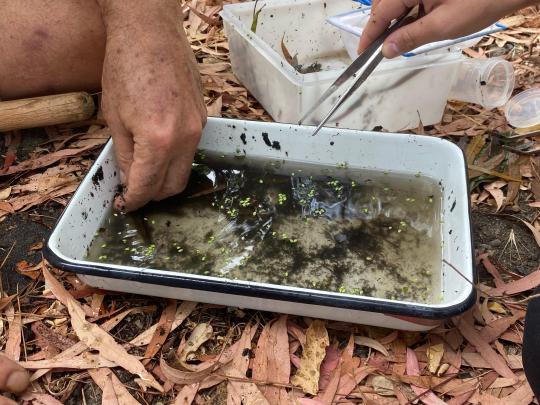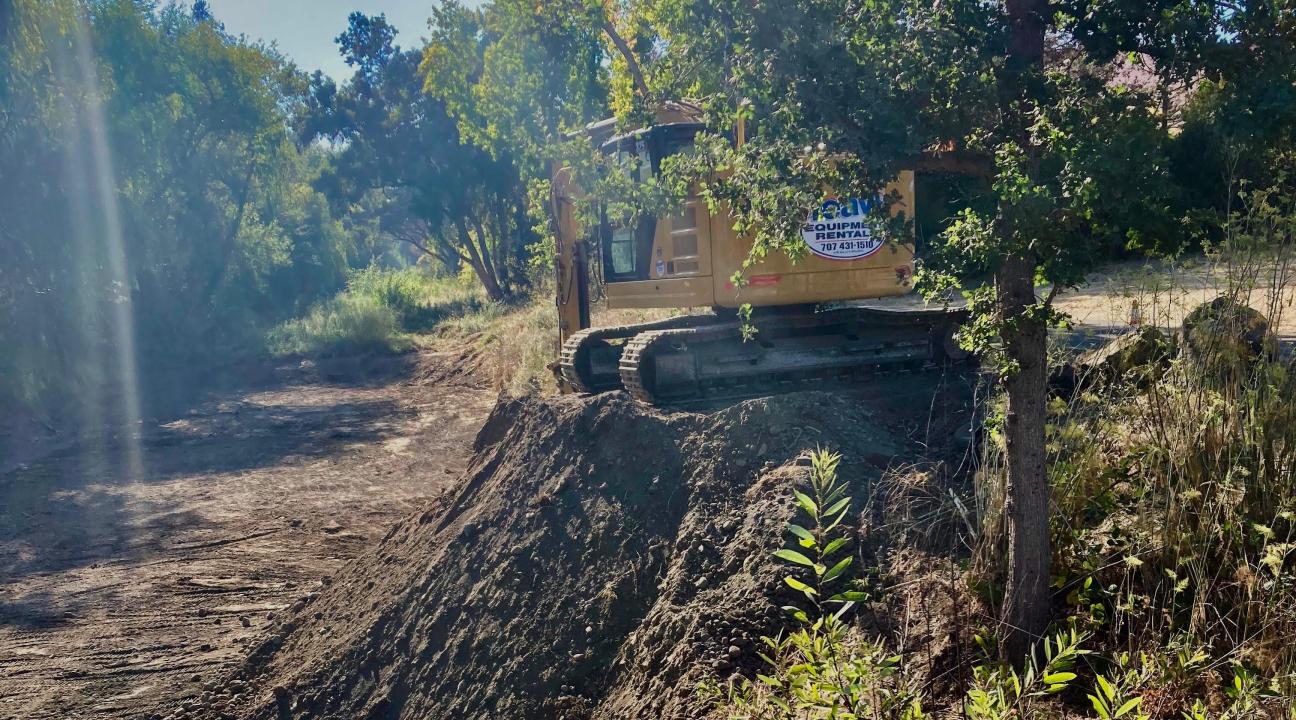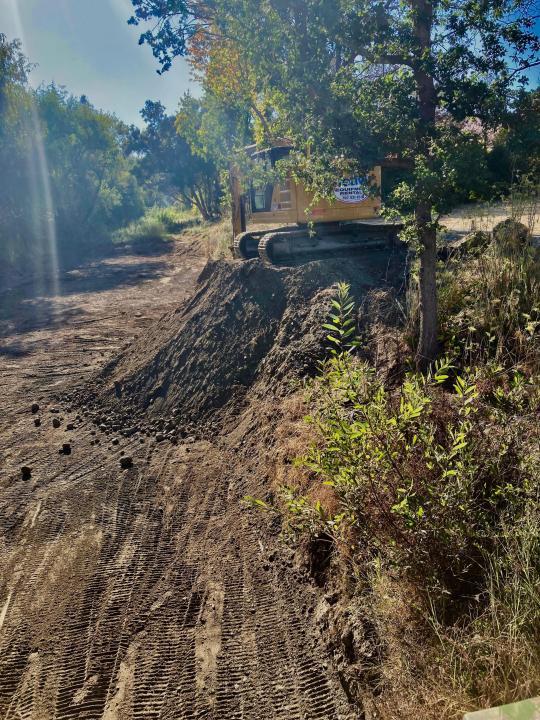SSU WATERS Grant Recipient Nicholas Geist: Assessing Habitat Quality and Biodiversity in Copeland Creek, an Urbanized Sonoma County Waterway
SSU’s Center for Environmental Inquiry congratulates several faculty members who have been awarded WATERS grants, made possible through a CEI partnership with Sonoma Water. We are profiling each recipient in a series of articles highlighting their work.
Biology Professor Dr. Nicholas Geist is funded by the WATERS Collaborative to engage students in research designed to improve water quality along Copeland Creek, Sonoma State’s on-campus creek. Geist's work has far reaching implications for the wildlife and vegetation that rely on the creek to thrive, as well as how urban communities can better preserve the abundant diversity of life that lives in these ecosystems.
Geist and graduate student Rebecca Kopel are leading a team of student researchers in a study of benthic macroinvertebrate communities in Copeland Creek. Benthic macroinvertebrates are aquatic insects and other organisms that live at the bottom of inland waterways. According to the EPA, they "are commonly used as indicators of” water quality “because they spend all or most of their lives in water, are easy to collect and differ in their tolerance to pollution." Geist called benthic macroinvertebrates "the foundation of healthy ecosystems."
Copeland Creek runs from SSU’s Fairfield Osborn Preserve down to Highway 101 and beyond. "There's a 10-mile stretch of creek that goes from pristine to urbanized," Geist said. "We're sampling all along the creek to pinpoint areas where water quality declines most rapidly and obviously." This decline is illustrated by studying which species of benthic macroinvertebrates are living in the creek. Some species are tolerant to poor water quality and others are very sensitive.
"We’re establishing a gradient – taking samples from Osborn all the way down to 101," said Geist. "In urban areas, we [only] see aquatic invertebrates that can better handle low water quality." Areas lacking the species sensitive to water quality means these parts of the creek have been exposed to more contaminants.
Geist and his student researchers are studying how urban development is affecting water quality, in hopes that the work can someday lead to solutions. "Before you address a problem, you have to identify it. You’ve got to start somewhere. You have to have data," Geist said. This work can help city and county officials. "We can show 'here’s the problem. Here’s where it is. Here are the reasons for it.' Then the community can address the problem. There are things you can do."
Geist said the unexpected wet winter has provided an opportunity to assess the data along a second parameter beyond urbanization - rainfall totals.
"The first samples came at the end of last dry season, which was an historic drought. Now we’ve had a good rainfall year. So places we could not sample because they were dry we can now sample," said Geist. "That means we can also look at how things change by season. So, we’re establishing a really nice database of the health of the creek. It just gives us additional data – because we have two sets of really extreme conditions to study."
This provides real-world opportunity for Geist's students. "When you’re doing science in a situation like this, you have to be flexible," he said. "This gives us an opportunity, and we’re taking advantage of it."
And Geist explained that additional rainfall does not corrupt the original intent of the study. "Sure, rainfall makes a difference, but the degree of urbanization shows direct effects on water quality. Rainfall helps, but it’s not going to alleviate some of these problems."
In addition to providing information that the community can use, Geist wants to provide his students with real-world skills.
"Students are learning skills that directly translate into making them more employable. They’re learning these field skills, and then they have this laboratory component, so they’re learning directly applicable skills that can go on their CV," Geist said. In addition, the topic itself is of interest to employers. "People care about water quality. Fresh water creeks are among the most vulnerable ecosystems on the planet."
Geist also wants students to have experiences they will cherish, and he finds that water quality resonates.
"I’ve done research in a lot of areas, and this has been the easiest project to engage students in. Students come to me. I’ve actually had to turn some students away," Geist said. "It is really great for our students, too, because they’re working as a team. The other day, I could hear them down the hall laughing, which is perfect, because science should be fun. They like being in the lab and doing this work. It’s not hard to motivate them, and I love it."
Students also find that the community cares about this work.
"People come along when we’re out sampling in the creeks and ask, ‘what are you kids doing?’ When we tell them what we’re doing, they say universally across the board, ‘that’s great’, because they live in this community, and they care about the health of it," said Geist. "It sells itself, which is very satisfying for me. I don’t have to convince people that this is important."
The Center for Environmental Inquiry mobilizes faculty, students and community to solve environmental challenges of the North Bay. To get involved; learn more about our programs, classes, or projects; or to donate, please contact Center Director Claudia Luke at [email protected] or visit cei.sonoma.edu.



